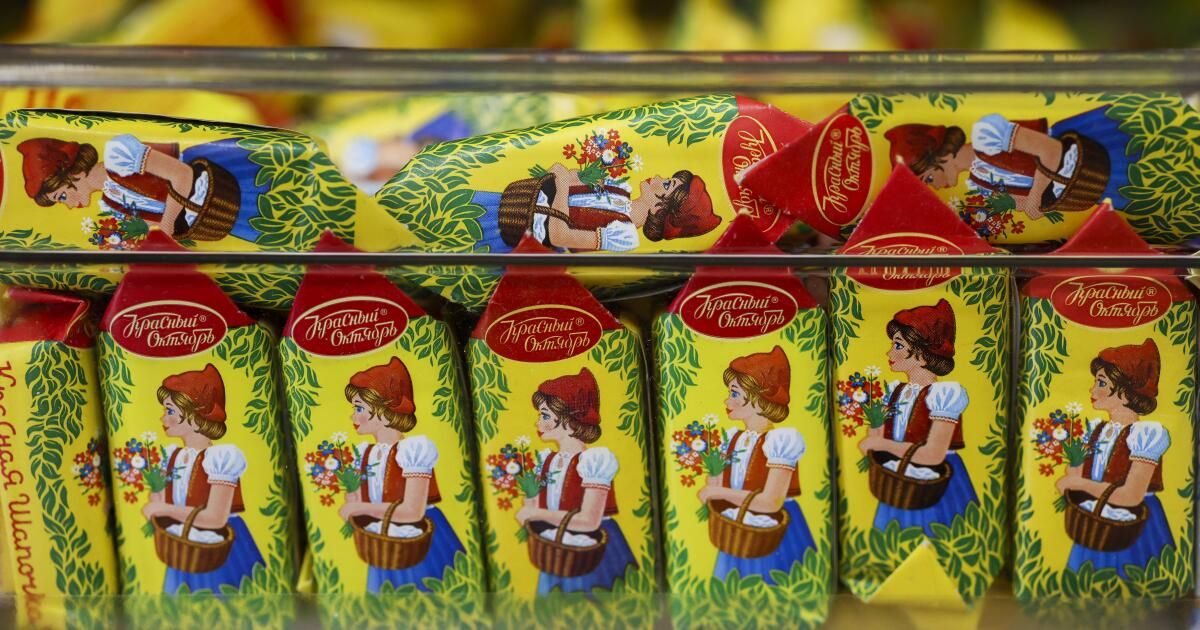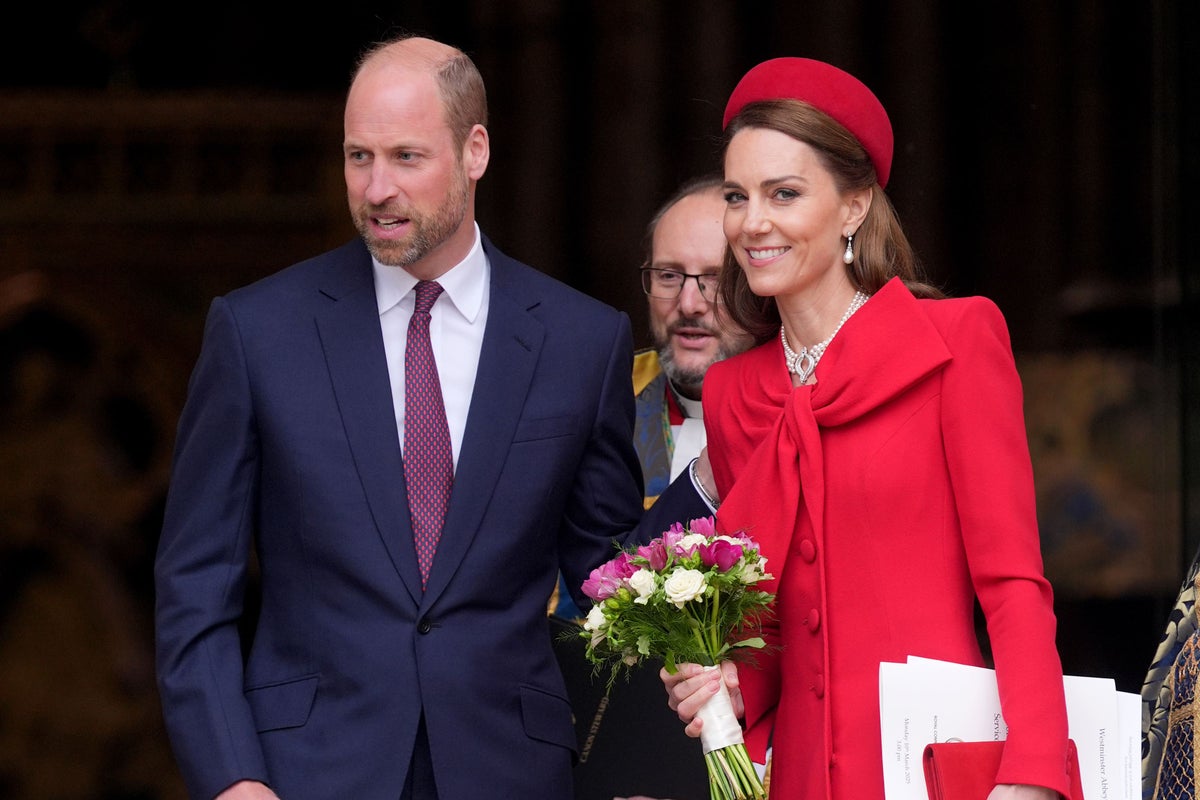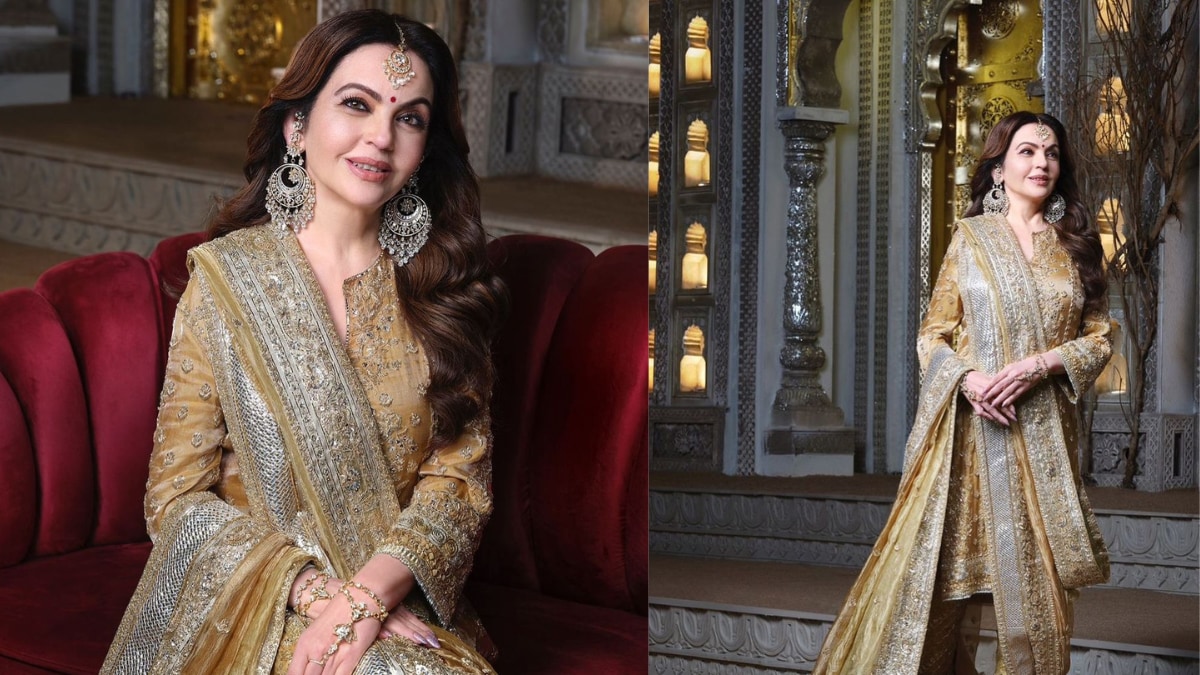Series
Vanessa Anderson is the editions, on a mission to explore the neighborhood groceries throughout the southern California.
If the valley were an ocean, it often feels as vast as one, then its sunk treasure is surely in the bulk sections of its Russian groceries.
There, instead of dried cherries and furtive almonds, there are thousands of individually packaged chocolates. In shades of Violeta and Bermellion, they brilely like jewelry under rays of light, each with an intricately designed wrapping and a story to tell.
My Russian fluidity begins and ends with “Cheers”, but luckily for me, iconography is no stranger in the Russian grocery store. Take Odessa Grocery in Valley Village, for example. Here you could launch an image book for children simply walking the halls. Butter, cookies, condensed milk, everything seems to have a pet.
The bulk section is no exception. Popular stories in chocolate wrappers are interesting enough, but the tradition they have created for those who grew up with them can only be a popular story.
“Little red bell, that's the sweet we had when children.” Tatiana Rosinskaya says of her position behind the cold box, her face framed by pyroshki batteries and pork bricks cured with salt. It refers to a chocolate covered wafer with an illustration of popular heroine that appears prominently in the front.

Golden Cockerel chocolates in Odessa Grocery in Valley Village, California.
(Juliana Yamada / Los Angeles Times)
Consider the Golden Cockerel, an orange Praline with a black chocolate glaze, inspired by the poem of the same name of Alexander Pushkin.
“This is not a fairy tale, this is a painting,” says buyer Sveta (which preferred to provide only his first name) while starting a blue pile preparation and holds it among its elegant nails. In it, a small painting of four bears in the forest. “Shishkin painted this,” he says, referring to the famous painting “Morning in a Pine Boss” by Ivan Shishkin and Konstantin Savitsky. One can see the similarities, but in the version of reproduced sweets, the bears are more full, more fluffy and more playful.


Bulk chocolate containers in Odessa Grocery in Valley Village show a treasure of sweets whose wrappers are inspired by fairy tales and popular art. (Juliana Yamada / Los Angeles Times)
Rosinskaya is from Saratov, Russia, and has memories of a close sweet factory in Samara. But in regards to sweet manufacturers, their clearest memory is красный ок could or “October red”, based in Moscow, with renown levels of Wonka.
Red October is responsible for a series of sweets, none more famous than Alenka.
Initially created when the company won a Soviet government contract in the 1960s to create an easily reproducible affordable milk chocolate for the masses, Alenka is recognized more for its packaging than its flavor. His characteristic blue -eyed baby wrapped in a head scarf Later he revealed that they are Elena Gerinas whose father Aleksandr took the picture in 1962. Gerinas lost a legal battle in search of compensation for image rights, which until today remains an icon of the halls.

Alenka Candies blue -eyed baby wrapped in a head scarf is a iconic Russian sweet, dating from the 1960s. It was later revealed that the face in the wrapping was Elena Gerinas, whose father took her photo.
(Juliana Yamada / Los Angeles Times)
Not all groceries in the Russian enclave of the Valley are exclusively Russian, and the same can be said of its customers. Families from all the former Soviet Union, the people of Uzbekistani, Ukraine, Georgia and Armenia, who buy in Odessa, which bears the name of a city in Ukraine.
The sweets follow their example, none more properly that Hazelnut Palaine Kara-Kum named for the desert that covers 70% of Turkmenistan. In the wrapping, five camels travel in beige oblivion under a golden sun.

Hazelnut Palaine Kara-Kum is named after Turkmenistan's vast desert. Your wrapping is decorated with camels.
(Juliana Yamada/Los Angeles Times)
“We left when they threw us,” says Sveta, when asked about coming to the United States from Uzbekistan.
“It also began in Ukraine, they said that the Russians go to Russia, the Jews go to Israel, the Armenians go to Armenia. We live in a very international city, many different types of people.”
These sweets also have nostalgia for the first generation, Bella tells me. He was born in Chicago of Ukrainian parents, and Batonchik, a chocolate roll full of powdered milk and crushed wafers, was one of the favorites at home. She chooses one on the shelf and smiles as an old friend.
“Honestly, they are not my favorite sweets. The taste of chocolate in many of these sweets is not intense. Because chocolate is expensive, it is cut with powdered milk, sugar, things like that,” he tells me. “But I like to eat them because my father's childhood experience helps me a bit.”
“I think many of these illustrations are intended to serve as a type of escapism,” intervenes his sister Ari.
“Yes,” says Bella. “You get lost in history and raise chocolate, which in itself is not rich or luxurious.”
Holding a golden cockerel, he adds: “When we grew up, my parents ate the sweets inside and then wrapped them again so that they looked like this.”

(Juliana Yamada/Los Angeles Times)













